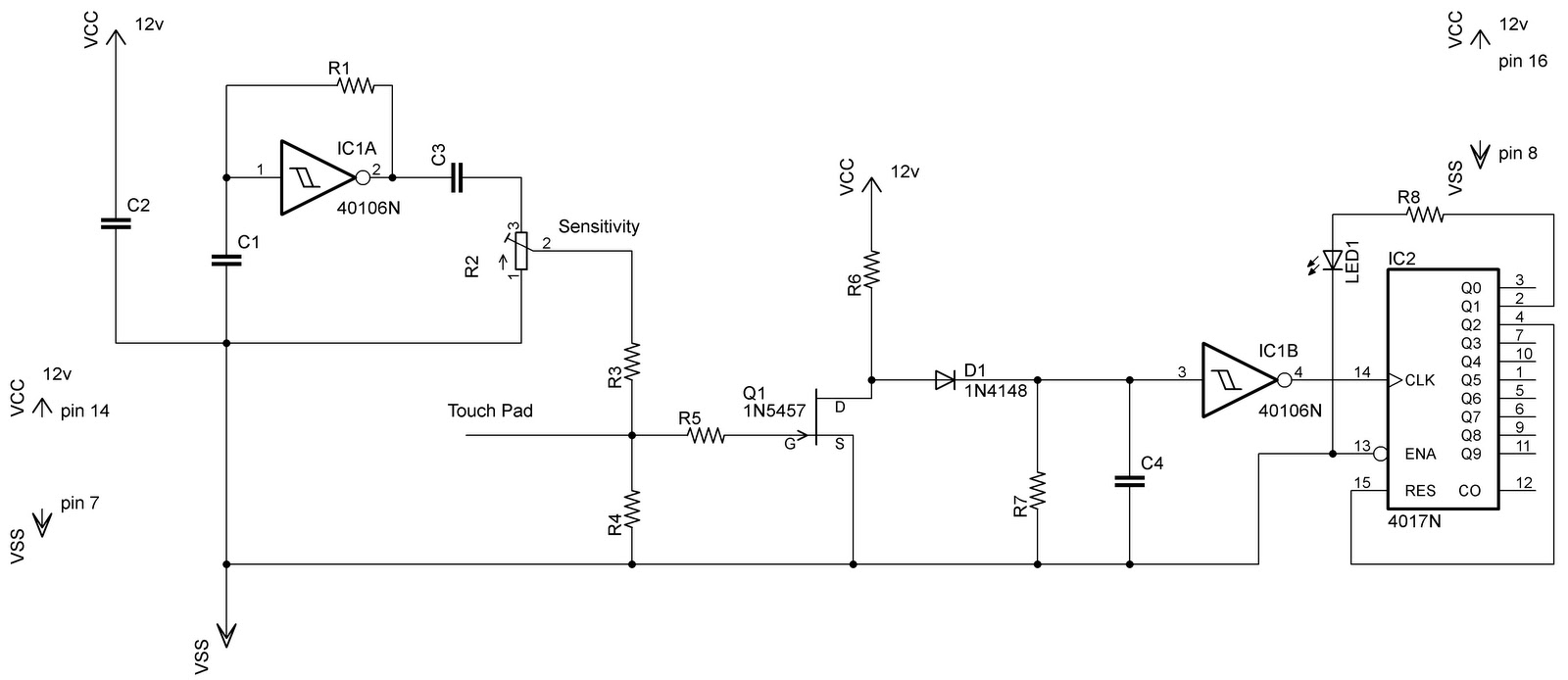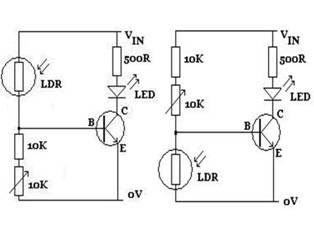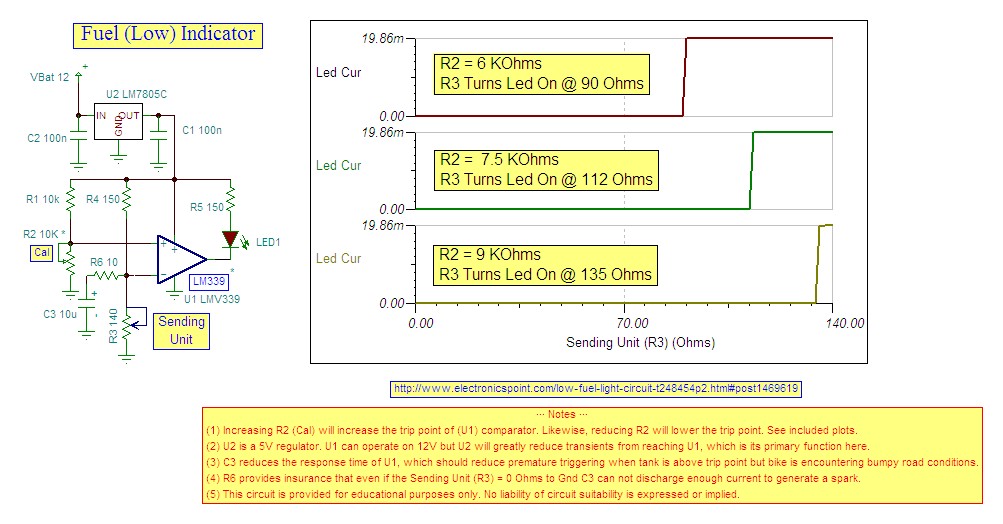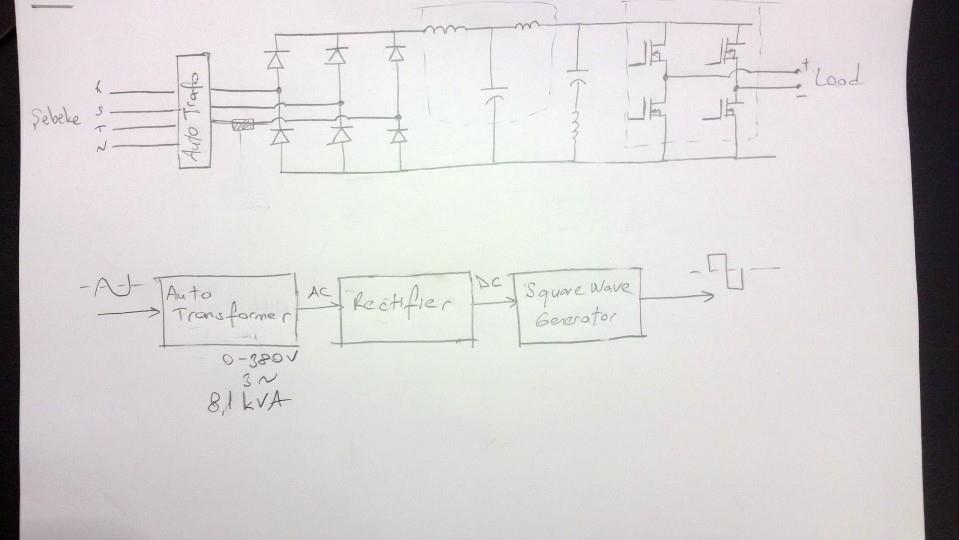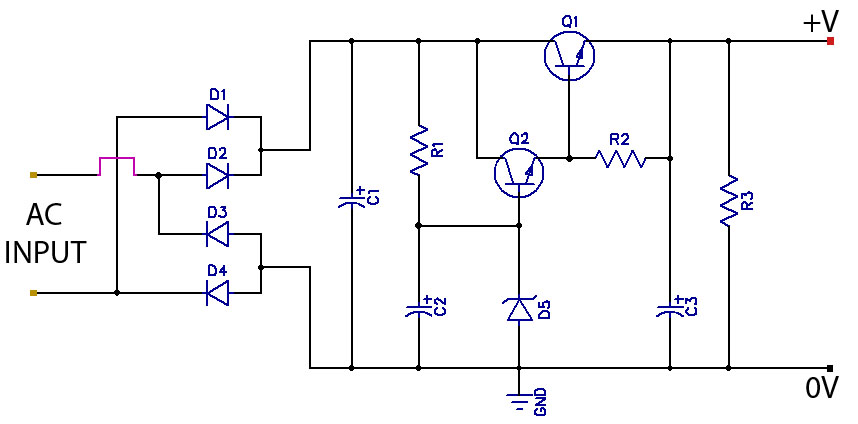
Sine wave oscillator low frequency-constant amplitude
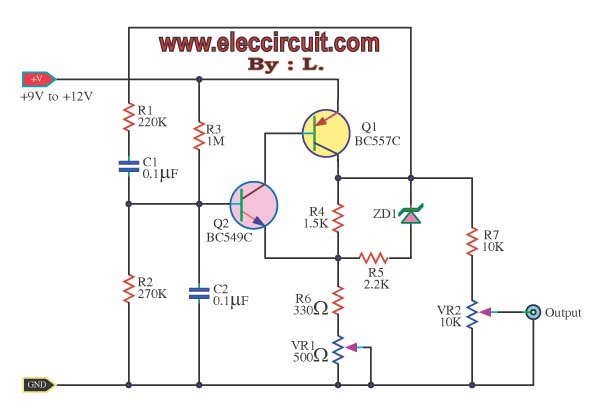
In a sine wave oscillator circuit, a thermistor and an incandescent lamp are often utilized to stabilize the output of the circuit at a fixed value. The resistance of...
The sine wave oscillator circuit is designed to generate a continuous sine wave output, which is essential in various applications such as audio signal generation, waveform synthesis, and testing of electronic devices. The inclusion of a thermistor and an incandescent lamp serves a critical role in stabilizing the output amplitude of the oscillator.
The thermistor, a type of temperature-sensitive resistor, is employed to provide feedback that adjusts the circuit parameters based on temperature variations. As the temperature changes, the resistance of the thermistor alters, thereby modifying the feedback loop and ensuring that the output remains stable despite external temperature fluctuations. This feature enhances the reliability of the oscillator in varying environmental conditions.
The incandescent lamp acts as a load and also contributes to the stabilization of the output. When the circuit operates, the lamp's filament heats up, which affects the overall circuit dynamics. The thermal inertia of the lamp provides a smoothing effect on the output waveform, reducing the amplitude fluctuations that could arise from abrupt changes in the circuit's operating conditions.
In designing this circuit, key considerations include the selection of appropriate values for the thermistor and the lamp's wattage to ensure that they work effectively within the desired frequency range. Additionally, the circuit layout should minimize parasitic capacitances and inductances that could distort the sine wave output. Proper filtering techniques may also be implemented to further refine the signal quality.
Overall, the integration of a thermistor and an incandescent lamp in a sine wave oscillator circuit not only stabilizes the output but also enhances the circuit's performance across a range of operating conditions, making it suitable for various electronic applications.In the Sine wave oscillator circuit often to be use the thermistor and Incandescent lamp, for upset the output of circuit has fixed value, the resistance of.. 🔗 External reference
The sine wave oscillator circuit is designed to generate a continuous sine wave output, which is essential in various applications such as audio signal generation, waveform synthesis, and testing of electronic devices. The inclusion of a thermistor and an incandescent lamp serves a critical role in stabilizing the output amplitude of the oscillator.
The thermistor, a type of temperature-sensitive resistor, is employed to provide feedback that adjusts the circuit parameters based on temperature variations. As the temperature changes, the resistance of the thermistor alters, thereby modifying the feedback loop and ensuring that the output remains stable despite external temperature fluctuations. This feature enhances the reliability of the oscillator in varying environmental conditions.
The incandescent lamp acts as a load and also contributes to the stabilization of the output. When the circuit operates, the lamp's filament heats up, which affects the overall circuit dynamics. The thermal inertia of the lamp provides a smoothing effect on the output waveform, reducing the amplitude fluctuations that could arise from abrupt changes in the circuit's operating conditions.
In designing this circuit, key considerations include the selection of appropriate values for the thermistor and the lamp's wattage to ensure that they work effectively within the desired frequency range. Additionally, the circuit layout should minimize parasitic capacitances and inductances that could distort the sine wave output. Proper filtering techniques may also be implemented to further refine the signal quality.
Overall, the integration of a thermistor and an incandescent lamp in a sine wave oscillator circuit not only stabilizes the output but also enhances the circuit's performance across a range of operating conditions, making it suitable for various electronic applications.In the Sine wave oscillator circuit often to be use the thermistor and Incandescent lamp, for upset the output of circuit has fixed value, the resistance of.. 🔗 External reference
